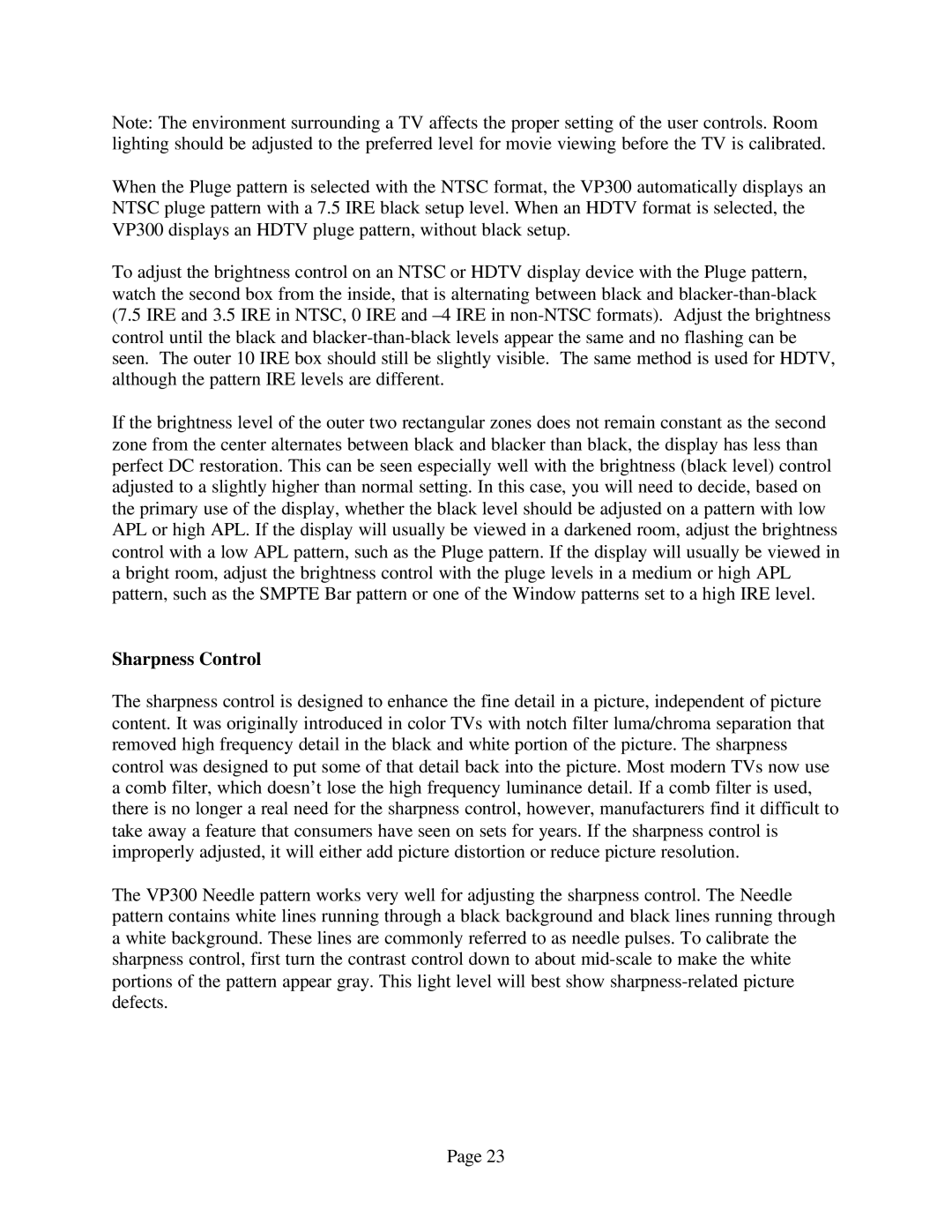Note: The environment surrounding a TV affects the proper setting of the user controls. Room lighting should be adjusted to the preferred level for movie viewing before the TV is calibrated.
When the Pluge pattern is selected with the NTSC format, the VP300 automatically displays an NTSC pluge pattern with a 7.5 IRE black setup level. When an HDTV format is selected, the VP300 displays an HDTV pluge pattern, without black setup.
To adjust the brightness control on an NTSC or HDTV display device with the Pluge pattern, watch the second box from the inside, that is alternating between black and
If the brightness level of the outer two rectangular zones does not remain constant as the second zone from the center alternates between black and blacker than black, the display has less than perfect DC restoration. This can be seen especially well with the brightness (black level) control adjusted to a slightly higher than normal setting. In this case, you will need to decide, based on the primary use of the display, whether the black level should be adjusted on a pattern with low APL or high APL. If the display will usually be viewed in a darkened room, adjust the brightness control with a low APL pattern, such as the Pluge pattern. If the display will usually be viewed in a bright room, adjust the brightness control with the pluge levels in a medium or high APL pattern, such as the SMPTE Bar pattern or one of the Window patterns set to a high IRE level.
Sharpness Control
The sharpness control is designed to enhance the fine detail in a picture, independent of picture content. It was originally introduced in color TVs with notch filter luma/chroma separation that removed high frequency detail in the black and white portion of the picture. The sharpness control was designed to put some of that detail back into the picture. Most modern TVs now use a comb filter, which doesn’t lose the high frequency luminance detail. If a comb filter is used, there is no longer a real need for the sharpness control, however, manufacturers find it difficult to take away a feature that consumers have seen on sets for years. If the sharpness control is improperly adjusted, it will either add picture distortion or reduce picture resolution.
The VP300 Needle pattern works very well for adjusting the sharpness control. The Needle pattern contains white lines running through a black background and black lines running through a white background. These lines are commonly referred to as needle pulses. To calibrate the sharpness control, first turn the contrast control down to about
Page 23
